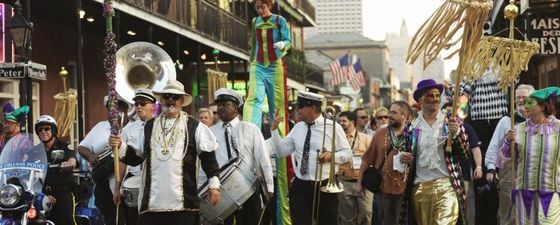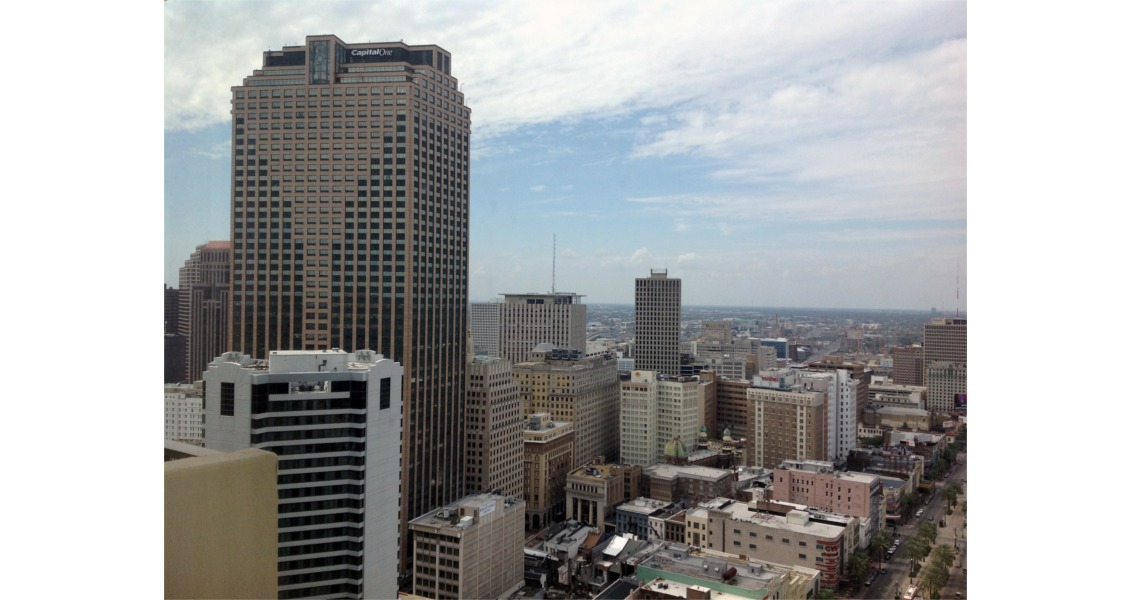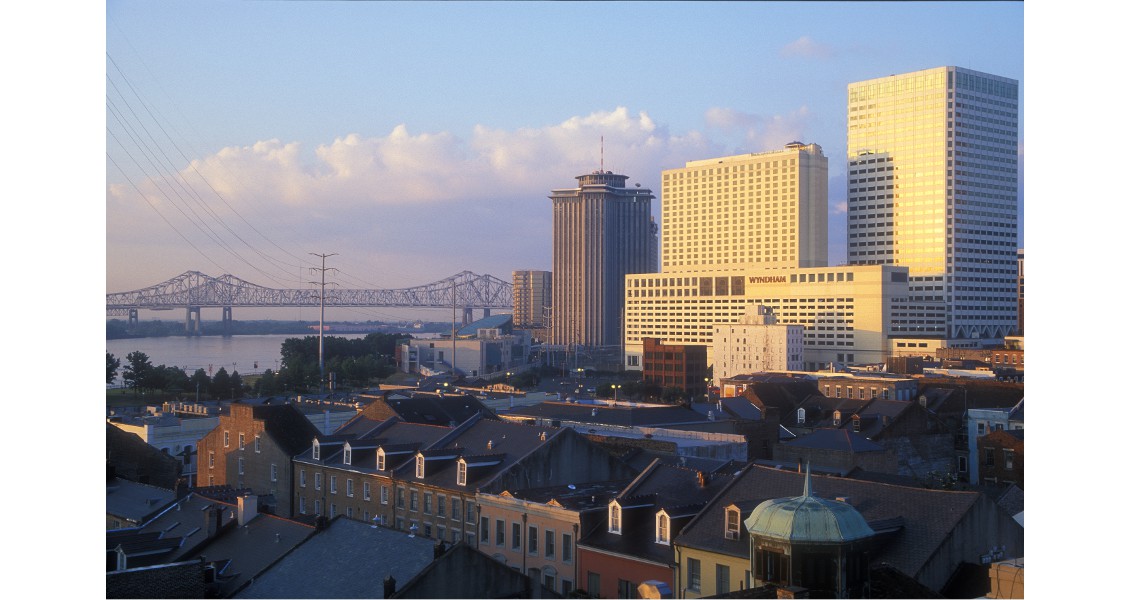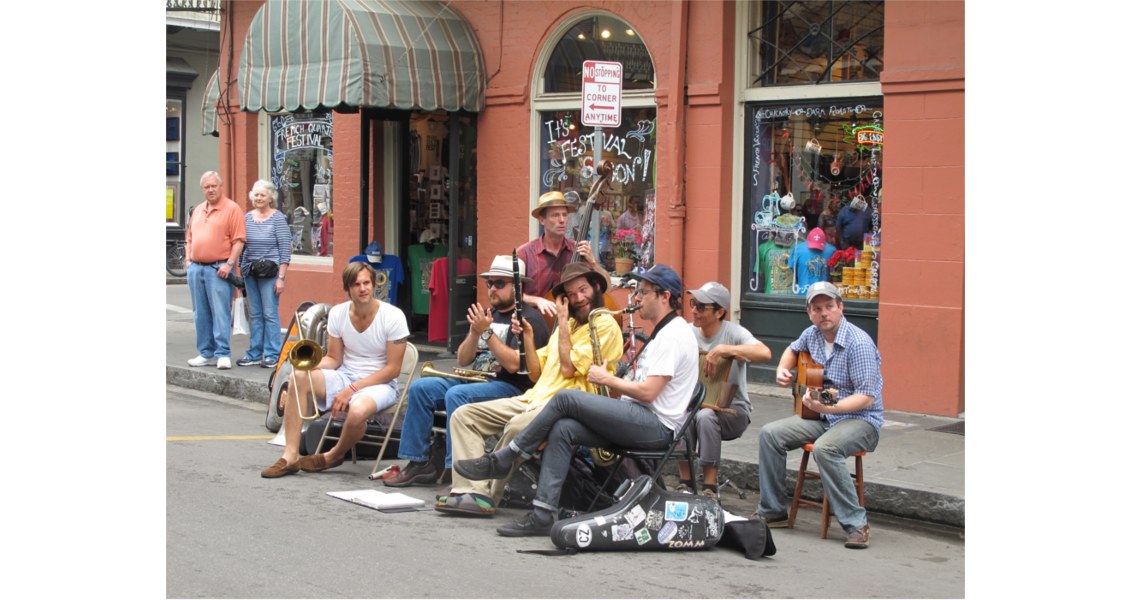New Orleans was founded in 1718 as a French trading centre in the Mississippi Delta and was named after the French Duke of Orléans, regent for the young French King Louis XV from 1715 to 1723.
The new city lay on a slight rise in the land on a bend in the Mississippi River, about 160 km from its mouth, with the large, shallow Lake Pontchartrain – strictly speaking an estuary connected to the Gulf of Mexico – lying to its north. It was set up by the French Mississippi Company and, in a taste of things to come, was almost completely destroyed by a hurricane in 1722, after which it was rebuilt in the grid pattern which still survives in the famous French Quarter. Contributing to its mix of cultures and heritage, in the 1760s it was ceded to Spain and remained a Spanish city for 40 years, trading with Cuba and Mexico and adopting the Spanish racial rules which allowed a class of free people of colour. It was during this time that most of the surviving distinctive architecture of the French Quarter, or Vieux Carré, was built.
In 1803 French Louisiana, which stretched west to the Rockies and north to Canada and included New Orleans, reverted from Spain to the French, who promptly sold it on to the fledging United States, thereby nearly doubling the size of that country.
Turbulent Times
New Orleans grew rapidly, with immigrants coming from Europe as well as other parts of the Americas. It became the wealthiest city in the United States, partly as a result of its port, through which large quantities of cotton and sugar were exported down the Mississippi River to the northern States and western Europe. The city also played a major role in the Atlantic slave trade during this time, as access to slaves was vital to the success of these industries. At the same time New Orleans had the largest and most prosperous community of ‘free persons of colour’ in the nation, often educated and middle-class property owners.
In 1830 the majority in New Orleans still spoke French, with the large Creole population (people descended from the colonial settlers of Louisiana, especially those with French, Spanish, African or Native American ancestry) joined by immigrants from France, the Caribbean and Canada (the original Cajuns, or Arcadians), as well as the French-speaking slave community. As the city got richer they were gradually outnumbered by English-speaking arrivals, so that nowadays the legacy of the language is mostly confined to place names and food.
As a wealthy southern city, New Orleans presented a tempting prize to the Unionist troops in the Civil War, and it was soon captured. During the post-war reconstruction era race became a potent political force, as emancipated slaves and free people of colour were brought into the political process, before the rise of the White League and the Ku Klux Klan in the 1870s forced them back out of it. These economic and social upheavals coupled with the rise of the railroads in the second half of the 19th century meant that New Orleans decreased in wealth and influence, although the port remained an important hub. The famous steam-powered riverboats, an important method of carrying both passengers and freight along the river and its shallow tributaries, created a whole culture of their own, as graphically described by Mark Twain.
Oil Comes to Town
By the beginning of the 20th century, the city was once more on the up, with major modernisation at the port and significant drainage works being undertaken to counteract the gradual subsidence the city was undergoing, as well as investments in water distribution, transportation and electrification, encouraging a burgeoning manufacturing sector. The new sound of New Orleans jazz was all the rage in the city and beyond.
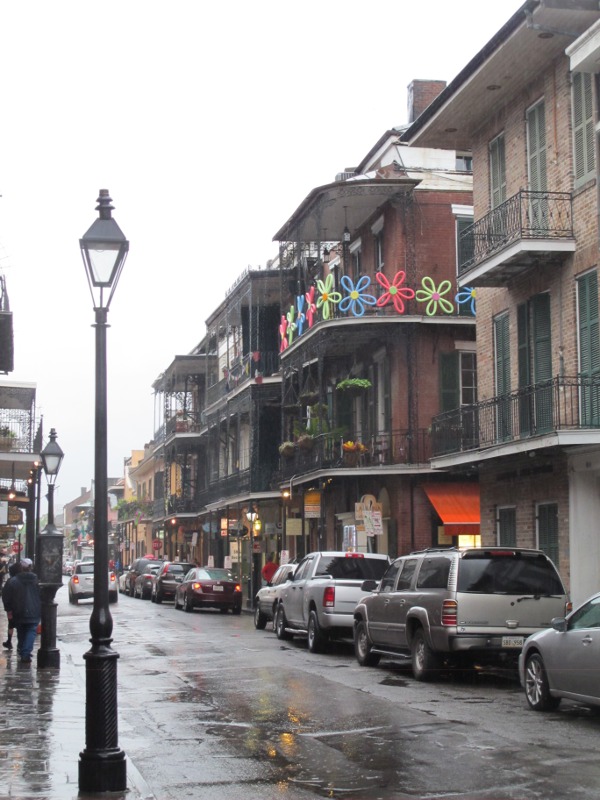 French Quarter architecture. (Source: Jane Whaley)Louisiana had also now entered the world of hydrocarbons. Encouraged by the spectacular 1901 oil gusher at Spindletop, some businessmen had leased land centred on gas seeps near the small town of Jennings, 250 km west of New Orleans. Having engaged the services of oil man W. Scott Heyward, who had been involved in the Spindletop drilling , they drilled to 450m – deeper than the Texas wells – without success. Working on a hunch, Heyward insisted they continued drilling – and at 550m they found a reservoir which gushed oil over 30m into the air.
French Quarter architecture. (Source: Jane Whaley)Louisiana had also now entered the world of hydrocarbons. Encouraged by the spectacular 1901 oil gusher at Spindletop, some businessmen had leased land centred on gas seeps near the small town of Jennings, 250 km west of New Orleans. Having engaged the services of oil man W. Scott Heyward, who had been involved in the Spindletop drilling , they drilled to 450m – deeper than the Texas wells – without success. Working on a hunch, Heyward insisted they continued drilling – and at 550m they found a reservoir which gushed oil over 30m into the air.
Louisiana now ranks third in gas-producing and ninth in oil-producing states in the US, and holds nearly 20% of the country’s reserves of natural gas, much of it offshore in the Gulf of Mexico. During WWII New Orleans saw a boom through the ship-building and armaments industries and the port became the point of embarkation for thousands of troops. Post-war decline was averted by the development of oil- and gas-related employment in the petrochemical processing plants which sprung up along the coast and river, bringing investment to the city and making the port one of the busiest in America.
The late 1970s and early ‘80s were boom times for the New Orleans hydrocarbon industry, and the skyline of the city reflected it. Dilapidated 19th century buildings in the Poydras Avenue area, including banks and the cotton and sugar exchanges, were replaced by structures such as the 22 floors of reflective glass of what was originally known as the Exxon Building, at 1555 Poydras St. But, as so often happens, bust followed boom, and with the collapse of the oil price in the mid-80s many companies failed or left town, and New Orleans entered a severe economic recession.
Hurricanes and Carnival
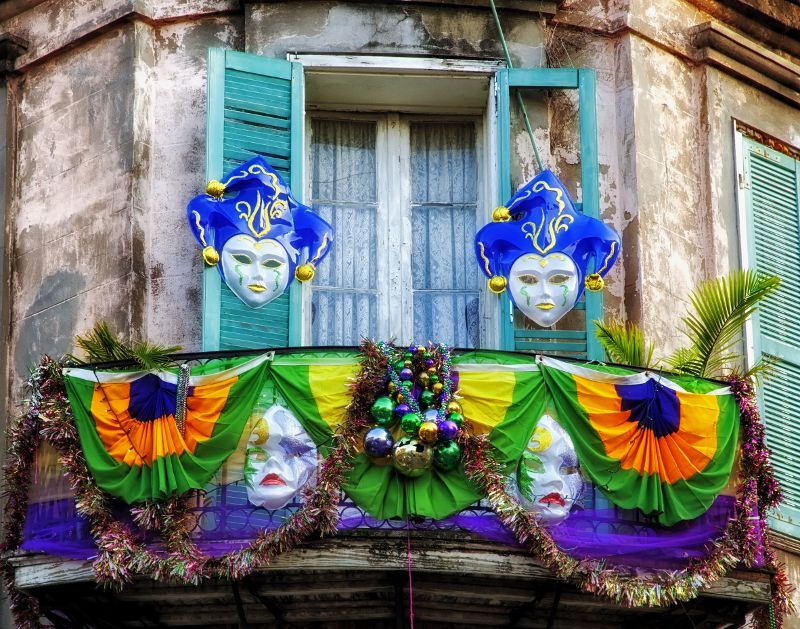 Mardi Gras decorations.Built almost surrounded by water on swampy land barely above sea-level, slowly sinking, and right in the centre of the summer hurricane pathway, New Orleans has always been at the mercy of the elements. The first artificial levees and canals were built to protect it back in early colonial times, but it remains a problem. Between 1896 and 1915 a world-class drainage system was installed to remove runoff and groundwater in low-lying areas, and the levees are constantly revised and additional pumps installed, but hurricane damage and floods continued to threaten the city, culminating in Hurricane Katrina in 2005. The city was evacuated as the winds tore away roofs and drove a storm surge that breached levees, flooding 80% of the city. Hundreds were killed in the flooding and thousands were trapped for days.
Mardi Gras decorations.Built almost surrounded by water on swampy land barely above sea-level, slowly sinking, and right in the centre of the summer hurricane pathway, New Orleans has always been at the mercy of the elements. The first artificial levees and canals were built to protect it back in early colonial times, but it remains a problem. Between 1896 and 1915 a world-class drainage system was installed to remove runoff and groundwater in low-lying areas, and the levees are constantly revised and additional pumps installed, but hurricane damage and floods continued to threaten the city, culminating in Hurricane Katrina in 2005. The city was evacuated as the winds tore away roofs and drove a storm surge that breached levees, flooding 80% of the city. Hundreds were killed in the flooding and thousands were trapped for days.
The city is not yet back to its pre-Katrina levels of population or prosperity, and large areas are still in the process of regeneration. It remains, however, one of the most exciting and vibrant cities in the world to visit, reflecting its diverse history. The famous Mardi Gras parades are just one example of the carnival traditions which have centuries-old roots in French and Spanish Catholicism, as well as in African and Native American customs. There is an unrivalled music scene covering all genres, with fantastic live music on every street corner in the city centre, while the mixed European and Caribbean heritage is clearly found in the spicy Creole cuisine and distinctive architecture – best appreciated through a ride on the oldest surviving streetcar in the US along St. Charles Street from the French Quarter through to the Victorian mansions of Garden Town and Carolton.
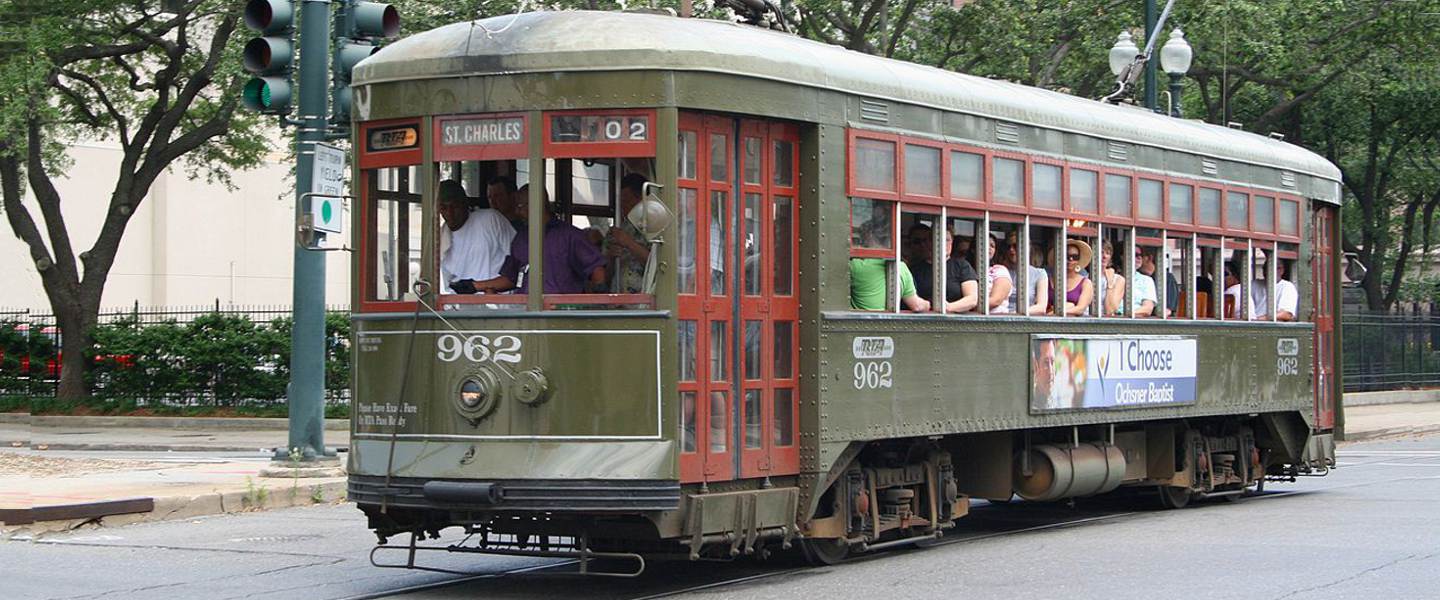 Streetcar in New Orleans. (Diego Delso)
Streetcar in New Orleans. (Diego Delso)

